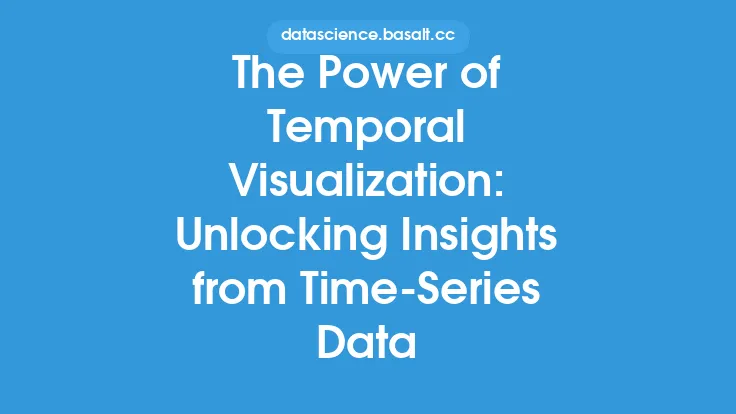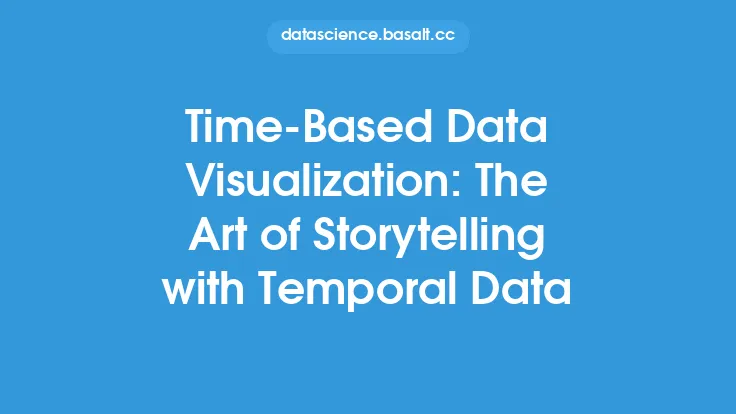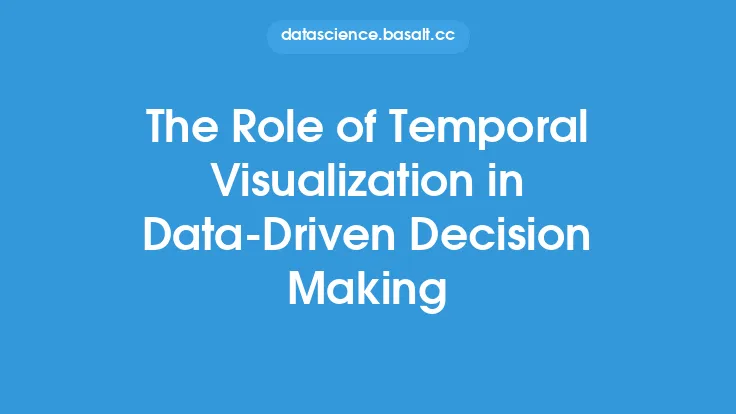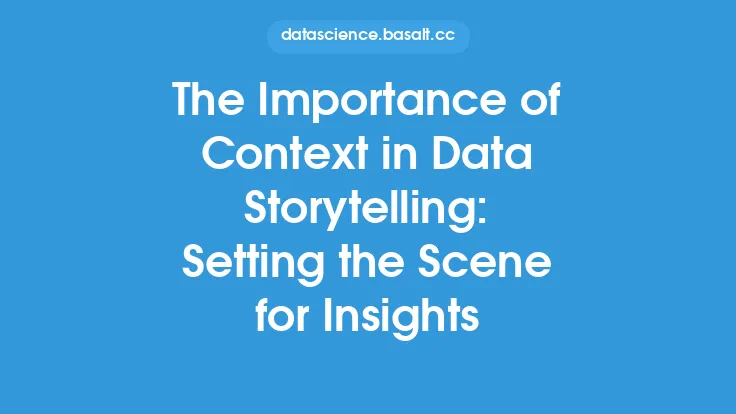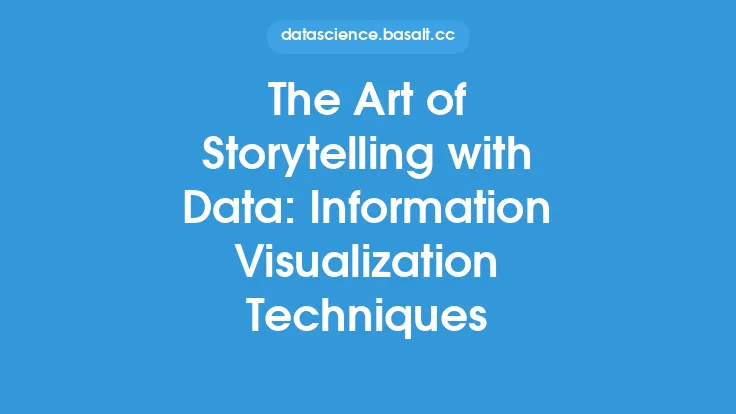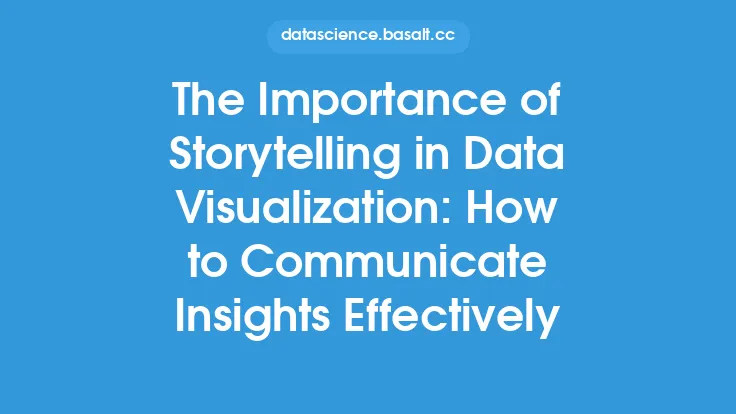Time is a fundamental aspect of data visualization, as it provides context and allows for the analysis of trends, patterns, and relationships over a specific period. Temporal visualization techniques are designed to effectively communicate time-based data, enabling users to extract insights and make informed decisions. In this article, we will delve into the importance of time in data visualization, exploring the various techniques and methods used to visualize temporal data.
Introduction to Temporal Visualization
Temporal visualization refers to the process of representing time-based data in a graphical format, allowing users to analyze and understand complex patterns and trends. This type of visualization is essential in various fields, including finance, healthcare, and climate science, where time-series data is commonly used. Temporal visualization techniques can be applied to various types of data, including discrete and continuous data, and can be used to visualize data at different scales, from seconds to years.
Types of Temporal Visualization
There are several types of temporal visualization techniques, each with its own strengths and weaknesses. Some of the most common types include:
- Time-series plots: These plots display data over a continuous period, allowing users to analyze trends and patterns.
- Gantt charts: These charts are used to visualize schedules and timelines, making it easy to track progress and dependencies.
- Heat maps: These maps use color to represent data density over time, allowing users to identify patterns and anomalies.
- Stream graphs: These graphs display data as a series of streams, making it easy to visualize complex patterns and relationships.
- Calendar-based visualizations: These visualizations use a calendar format to display data, making it easy to analyze seasonal patterns and trends.
Techniques for Visualizing Temporal Data
Visualizing temporal data requires a range of techniques, including:
- Aggregation: This involves grouping data into time intervals, such as hours, days, or months, to reduce complexity and improve analysis.
- Filtering: This involves selecting specific time periods or data points to focus on, allowing users to drill down into specific patterns and trends.
- Smoothing: This involves using algorithms to reduce noise and irregularities in the data, making it easier to analyze and visualize.
- Interpolation: This involves using algorithms to fill in missing data points, creating a continuous and smooth visualization.
- Animation: This involves using animation to display data over time, making it easy to visualize complex patterns and relationships.
Tools and Technologies for Temporal Visualization
There are a range of tools and technologies available for temporal visualization, including:
- D3.js: A popular JavaScript library for creating interactive and dynamic visualizations.
- Matplotlib: A Python library for creating static and interactive visualizations.
- Tableau: A data visualization platform that provides a range of tools and features for temporal visualization.
- Power BI: A business analytics service that provides a range of tools and features for temporal visualization.
- Gephi: An open-source platform for network data analysis and visualization.
Best Practices for Temporal Visualization
When creating temporal visualizations, there are several best practices to keep in mind, including:
- Keep it simple: Avoid clutter and complexity by using simple and intuitive visualizations.
- Use color effectively: Use color to highlight important patterns and trends, and to differentiate between different data points.
- Provide context: Provide context and metadata to help users understand the data and its significance.
- Use interactive tools: Use interactive tools and features to allow users to explore and analyze the data in more detail.
- Test and refine: Test and refine the visualization to ensure it is effective and easy to use.
Challenges and Limitations of Temporal Visualization
Temporal visualization is not without its challenges and limitations, including:
- Data quality: Poor data quality can make it difficult to create effective temporal visualizations.
- Scalability: Large datasets can be difficult to visualize and analyze, requiring specialized tools and techniques.
- Complexity: Complex patterns and relationships can be difficult to visualize and communicate, requiring specialized techniques and tools.
- Interpretation: Temporal visualizations can be open to interpretation, requiring users to have a good understanding of the data and its context.
Future Directions for Temporal Visualization
The field of temporal visualization is constantly evolving, with new techniques and tools being developed all the time. Some of the future directions for temporal visualization include:
- Increased use of AI and machine learning: AI and machine learning can be used to automate and improve temporal visualization, making it easier to analyze and communicate complex patterns and relationships.
- Greater use of interactive and dynamic visualizations: Interactive and dynamic visualizations can be used to create more engaging and effective temporal visualizations, allowing users to explore and analyze the data in more detail.
- Increased focus on storytelling: Temporal visualization can be used to tell stories and communicate insights, making it easier to engage and inform users.
- Greater use of virtual and augmented reality: Virtual and augmented reality can be used to create immersive and interactive temporal visualizations, making it easier to analyze and communicate complex patterns and relationships.
